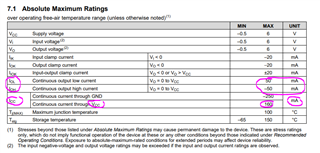Other Parts Discussed in Thread: TCA9535,
Tool/software:
Hi, I have a question regarding I/O Icc when using an I/O expander to drive an LED using either the TCA9555 or the TCA9535. Is there a way to calculate what the additional shoot-through current may be of an I/O input pin at a set value when the LED is in an off state?
Lets say in a situation where the I/O expander Vcc is at 5V, I/O pin is set to an input, and based on an LED forward voltage of ~0.9V(generated from leakage current) and a lower LED voltage rail of 3.3V, the input pin is held to about 2.4V.
- Does a higher Icc current even occur when using the TCA9555 because of the built in 100k pull up resistor on each I/O pin?
- For both parts (or just the TCA9535 given 1. if correct ) is there a way we can calculate what this additional shoot-through current is on the input stage from that lower input voltage? Could this additional current cause damage to the part?
- Does any of this apply when the pin is set to an output state and driven high?
Thankyou for your time.




